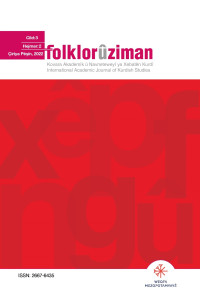Öz
This article proposes a method for bringing the two most widely spoken Kurdish dialects, Kurmanji and Sorani, closer together, as part of the process of standardization, and this is illustrated with examples. Through the comparison of the two dialects, both morphological and lexical features can be identified. Often one dialect exhibits multiformity while the other has a single form. Notwithstanding an important exception to this method (the past participle), in general, by selecting one of the multiple forms that is closest to the other dialect’s single form, the dialects can be brought closer together. This is proposed as part of an educational system designed to engender mutual respect, by teaching all Kurdish children both Kurmanji and Sorani, and in both the Latin and Arabic orthographies for Kurdish.
Anahtar Kelimeler
Sorani Kurmanci Standardization morphological features multiformity
Öz
Ev nivîs di prosesa standardkirina kurdî da li ser perspektîfa nêzîkkirina du zaravayên kurdî, soranî û kurmancî disekine. Bi berawirdkirina her du zaravayan û tesbîtkirina hevbeşîyên çi morfolojîk çi jî leksîkal, formên hevbeş dikarin bên bijartin û bi bikaranîna van formên hevbeş jî stratejîyeka ku hem zaravayan nêzîkî hev dike û hem jî tesîrê li hişmendîya neteweyî dike, dikare bê bidestxistin. Dema ku ev neyê kirin û zaravayek li ser zaravayekê bê ferzkirin jî dijberîya cudaker pêk tê û fêmkirin û rêzgirtina dualî kêmtir dibe. Ji bo nêzîkkirina van du zaravayan, rêbazeka nû ku ji berawirdkirina her duyan pêk tê, hatîye pêşnîyarkirin û ev yek bi mînakan hatîye ravekirin.
Ayrıntılar
| Birincil Dil | Kürtçe |
|---|---|
| Konular | Dil Çalışmaları |
| Bölüm | Translation |
| Çevirmenler |
Michael L. Chyet Bu kişi benim |
| Yayımlanma Tarihi | 25 Ocak 2023 |
| Yayımlandığı Sayı | Yıl 2022 Cilt: 3 Sayı: 2 |


